
Gareth Russell discusses the successes and failures of Henry VIII as a military leader, leading to some interesting and damning conclusions.
[Read More...]
Gareth Russell discusses the successes and failures of Henry VIII as a military leader, leading to some interesting and damning conclusions.
[Read More...]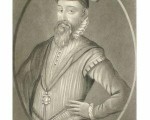
On this day in history, 3rd November 1592, Sir John Perrot, Privy Councillor and former Lord Deputy of Ireland, died at the Tower of London from illness. He was buried in the Chapel of St Peter ad Vincula at the Tower. He’d been tried for treason in April 1592 and later sentenced to death, but he died of natural causes.
Philippa Jones (The Other Tudors) writes of how it was widely believed that he was actually the illegitimate son of Henry VIII by Mary Berkeley, who served Catherine of Aragon, Henry VIII’s first wife, but others dispute this claim, saying that there is no evidence to support this.
I did a Claire Chats video “Was Sir John Perrot Henry VIII’s son?” in which I look at Perrot’s life and the evidence regarding his parentage.
[Read More...]
A big welcome to historian Elizabeth Norton who joins us today with a guest article as part of the virtual book tour for her newly released book The Lives of Tudor Women.
The Tudor dynasty is bookended by two princesses named Elizabeth Tudor, who serve as the full-stops between which the lives of countless women were lived. The second Elizabeth Tudor, whose death brought the dynasty to an end in March 1603, is, of course, well known. But the other, who was born in 1492, is largely forgotten. As the playmate of his early childhood she is, however, Henry VIII’s lost sister.
[Read More...]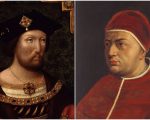
On 11th October 1521, Pope Leo X conferred upon King Henry VIII the title of Fidei Defensor, “Defender of the Faith”.
Letters and Papers contains a record of “Wolsey’s speech on presenting the bull for the title of Defender of the Faith”:
[Read More...]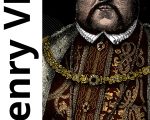
The second book in our series of Tudor Monarchs e-books is now available for Tudor Society members to download.
Articles from a wide variety of authors and historians take us through the fascinating life and times of Henry VIII.
[Read More...]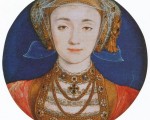
On this day in history, 22nd September 1515, Anna von Jülich-Kleve-Berg, or Anne of Cleves as we know her, was born near Düsseldorf. She was the second daughter of John III, Duke of Jülich, Cleves and Berg, an important German ruler, and his wife, Maria of Jülich-Berg.
[Read More...]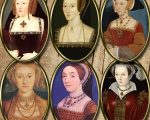
MedievalCourses.com has just launched a new course by Gareth Russell, editor of the Tudor Society’s Tudor Life magazine and author of The Emperors: How Europe’s Rulers Were Destroyed by the First World War, A History of the English Monarchy: From Boadicea to Elizabeth I and the forthcoming Young and Damned and Fair: The Life and Tragedy of Catherine Howard at the Court of Henry VIII.
Although I’m biased, being involved in MedievalCourse.com, I can hand-on-heart say that this is an excellent course. Gareth has done a brilliant job in creating and narrating each of the seven units and what I really love about this course is that he doesn’t look at the same old topics regarding these wives, he “uses each wife to explore a different aspect of monarchy in Tudor England” and then finishes with a unit considering why these women remain so popular and how they have “been re-invented and revitalised by the age of Hollywood, television and best-selling novels”. Bravo, Gareth, you’ve done a wonderful job!
[Read More...]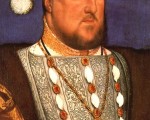
On this day in history, 18th September 1544, Henry VIII rode triumphantly through the streets of Boulogne after the French surrendered, ending the Siege of Boulogne, which had started on 19th July 1544. The English forces then set about fortifying the town.
[Read More...]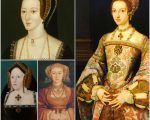
Henry VIII’s six wives are as popular as ever. In the 2016 History Hot 100 recently compiled by BBC History Magazine, no less than four of the notorious Tudor king’s consorts featured. Perhaps, unsurprisingly, wife number two Anne Boleyn finished highest, at number 4. Katherine Parr came in at number 31, Katherine of Aragon at 36, and Anne of Cleves at 38.
Tudormania, as coined by a Guardian article, is pervasive. The general public and historians alike cannot get enough of the Tudors. But our obsession with this colourful dynasty, by and large, centres on a handful of characters that dominate films, novels and articles. This confinement of our focus is starkly revealed in the Hot 100: the top Tudor figures are, unsurprisingly, Elizabeth I, Henry VIII, Anne Boleyn and Thomas Cromwell.
[Read More...]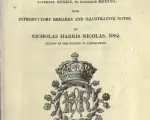
I think that this source is already on the Henry VIII Primary Sources page but I just wanted to highlight it today as a primary source because it makes for fascinating reading and gives a real insight into Henry VIII’s life.
[Read More...]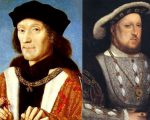
On this day in history, 21st April 1509, fifty-two-year-old King Henry VII died at Richmond Palace, passing the throne on to his seventeen-year-old son Henry, who became King Henry VIII.
[Read More...]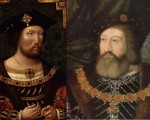
King Henry VIII held a great love of jousting. As a young teenager Henry had been denied the ability to joust in competitions as he was the sole heir to the throne. His father, Henry VII, feared his son may be injured or even worse killed. Yet when Henry came to the throne in 1509 he was extremely athletic and quickly took to the excitement and chivalry of the joust.
Throughout the early years of his reign Henry VIII participated in many fabulous jousting events, one of those being on 10th March 1524. However, the joust this day would not go as planned for the King and he faced a near disaster, one which could have ended his life.
[Read More...]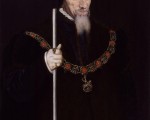

After a huge restoration project, Tudor stained glass windows are being reinstalled at The Vyne in Hampshire, a property that Henry VIII visited several times. In one of the stained glass panels “a slim and beardless young Henry VIII kneels meekly in prayer near his beloved wife Catherine of Aragon and his sister Margaret.”
[Read More...]
As today is the anniversary of the death of King Henry VIII in 1547, Beth von Staats, Tudor Life magazine contributor and author of Thomas Cranmer in a Nutshell, has written a very moving piece of fiction about Henry VIII’s final days from the viewpoint of Thomas Cranmer. I do hope you enjoy it.
It is time for the Lord to act; they have frustrated Your law. ~~~ Psalm 119:126
[Read More...]
In today’s Claire Chats I look at Richard Edwards: who he was and how he has become linked to Henry VIII.
[Read More...]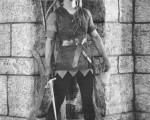
On 18th January 1510, Henry VIII and twelve of his men disguised themselves as outlaws, or Robin Hood and his merry men, and surprised Queen Catherine and her ladies. Chronicler Edward Hall records this event:
[Read More...]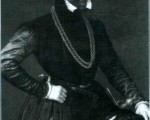
In today’s Claire Chats, I look at the life of Thomas Stukeley (Stucley), the claim that he was an illegitimate son of Henry VIII and what evidence there is to back up that claim.
[Read More...]
This month we are happy to have Kyra Kramer as our expert speaker. In this talk Kyra discusses the various illnesses and maladies which affected Henry VIII during his life.
[Read More...]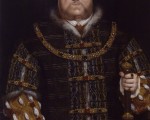
On 30th December 1546, Henry VIII signed his last will and testament, authorising changes he’d instructed William Paget to make on his behalf on 26th December 1546.
You can find a transcript of Henry VIII’s will from Letters and Papers below, but I’d highly recommend Suzannah Lipscomb’s book The King is Dead as it guides the reader through the last few months of Henry VIII’s death and argues that Henry was in control right to the end and that his will reflected his wishes and not those of the Reformists surrounding him. It is a wonderful read and also contains a transcript of the will.
[Read More...]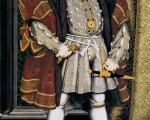

In today’s Claire Chats I discuss Ethelreda Malte, the theory that she was fathered by Henry VIII and the evidence used to back up the theory.
[Read More...]
In today’s Claire Chats video I start a series on the people who are rumoured to have been illegitimate children of Henry VIII. I’m starting with Sir John Perrot, looking at who he was, where the rumours come from and whether there’s any evidence to back them up.
[Read More...]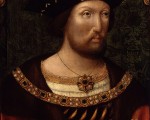
When Henry VIII came to the throne in 1509 he was just shy of his 18th birthday. He was tall, robust, handsome and athletic. Yet when the infamous King died on 28th January 1547 he weighed about 178kg and had a waist measurement of 52 inches and a chest measurement of about 53 inches. So how did this decline in Henry VIII’s physical appearance happen?
As a young man, Henry VIII was considered to be the most handsome prince in Europe. He was tall, standing at six foot two which was taller than the average man of the time. He was broad of shoulder, with strong muscular arms and legs, and had striking red/gold hair. It is said that rather than looking like his father, he resembled his grandfather the late Edward IV. In the armoury of the Tower of London is a suit of armour that Henry wore in 1514. The king’s measurements show that he had a waist of 35 inches and a chest of 42 inches, confirming that Henry was a well-proportioned, well-built young man.
[Read More...]
In today’s Claire Chats I discuss the royal progress undertaken by King Henry VIII and his fifth wife, Catherine Howard.
[Read More...]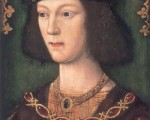
On Saturday 23rd June, Henry VIII and his wife Catherine of Aragon left the Tower of London and made their way through the streets of London to Westminster on their coronation procession.
[Read More...]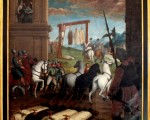
Between May 1535 and August 1540 eighteen monks from the Carthusian order were put to death for the same crime, for refusing to accept King Henry VIII as the Supreme Head of the Church.
[Read More...]
Cardinal Thomas Wolsey was patron to the Florentine scuptor Benedetto da Rovezzano (1474-1552) and commissioned him to make a lavish Renaissance style tomb for him. The project comprised a beautiful black marble sarcophagus and four bronze angels, each measuring around a metre in height, which are now known as Wolsey’s Angels.
[Read More...]
In this month’s second expert talk, Claire Ridgway looks at the fall of Anne Boleyn in 1536 and examines the roles of Thomas Cromwell and Henry VIII in those bloody events. Did Thomas Cromwell plot all by himself or was he simply his master’s servant? Was Henry VIII ultimately responsible? Why did Anne Boleyn have to die?
[Read More...]